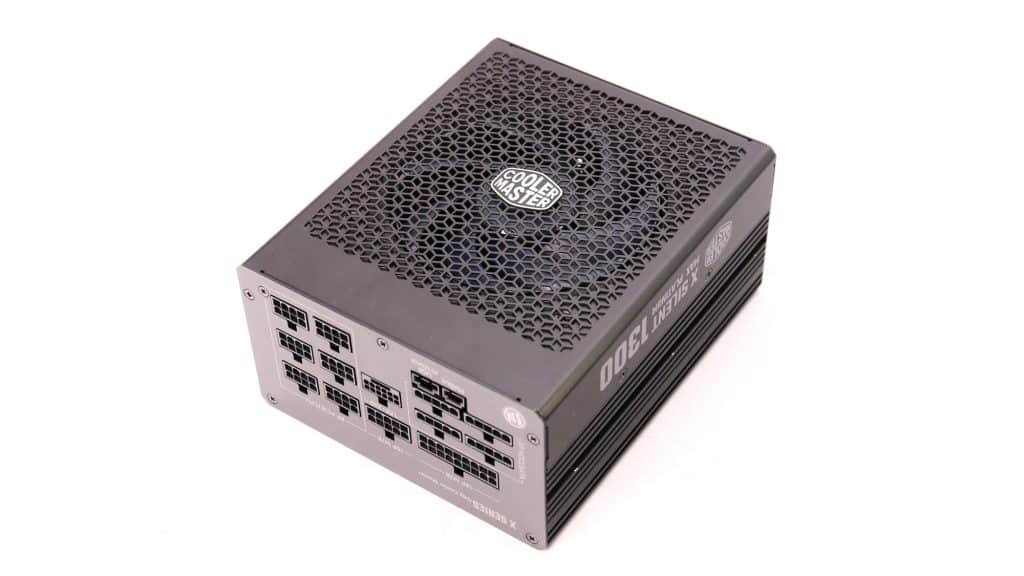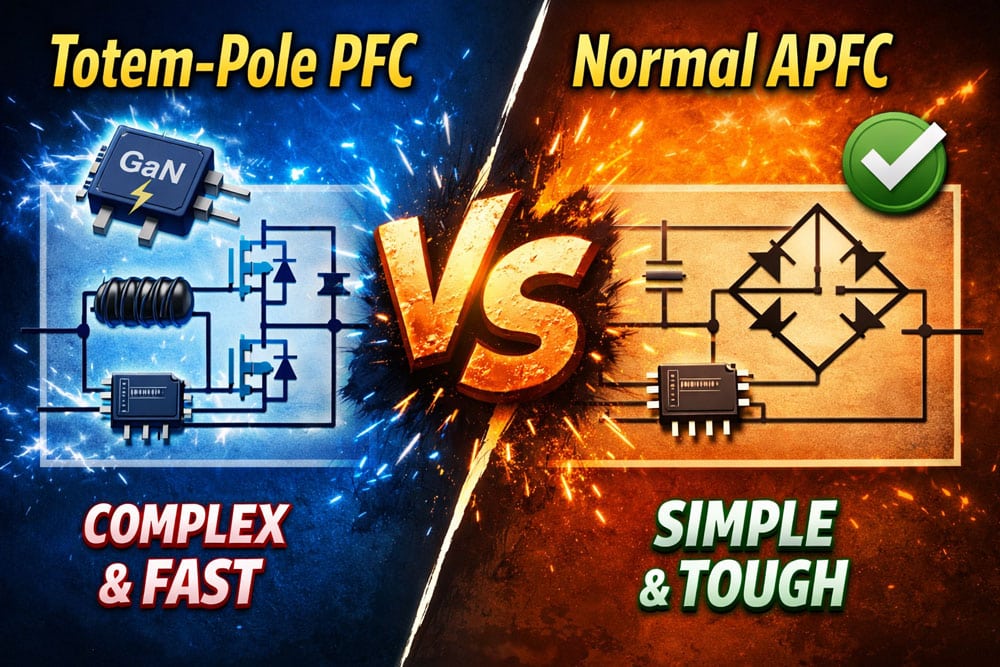Epilogue
I first evaluated the Cooler Master X Silent Edge 1100W, which left a good impression on me. Hence, it achieved an Editor’s Choice award. The X Silent MAX Platinum is also an interesting product since it can deliver up to 1300W, even at 115V. At the same time, the Silent Edge is restricted at 850W at low voltage input while behaving like a passively cooled unit in noise output. This is my first time encountering a powerful PSU with such a relaxed fan speed profile. Cooler Master looks to be super confident about this design, providing a ridiculously long 15-year warranty for this product. I expressed my disagreement with such long warranty periods in IT products, especially PSUs, in the previous X Silent PSU review, and hopefully, someone in CM will hear me.
Like the X Silent Edge, the X Silent Max is not affordable, going for 459 dollars. Given the development and production costs, this is a justified price. Indeed, someone can find way more affordable PSUs in this price range, but they won’t be even close to the extremely low noise output that the X Max achieves, thanks to its design. The price could be lower if CM avoided using the MCUs, which are not fully exploited since analog controllers handle all vital circuits. Having the digital controllers in place doesn’t say much if you don’t have the corresponding firmware, and this is CM’s next goal: to utilize these controllers fully. However, from the moment they are not utilized fully in this PSU, they could be omitted, vastly lowering the production cost.
As I stated in the X Silent Edge review, this platform looks to be at an intermediate stage of something great if CM follows the right path and doesn’t deviate. For starters, CM must exploit the MCUs and eliminate all analog controllers. By transforming the design to a true digital one, you have better control, so you can easily fine-tune the platform to achieve higher performance. A lower ripple at 12V under full load would be highly welcome, but I want a better transient response on this rail at high loads. To achieve this, more capacitance is required, and polymer caps don’t cut it there, so you need to use electrolytic ones, which are not as tolerant to high temperatures. Given that CM wants to keep the fan’s speed low, this could lead to problems. This is a design challenge that CM’s engineers have to handle. Moreover, the low efficiency at light and super-light loads should be addressed. The DC-DC converters also must beef up to deliver better load regulation, and standby power consumption should not exceed 0.1W at 230V.
Since this is a high-power PSU focusing on low noise output, and given the MCUs that it already has, I find it essential to have fan failure protection. This is among the most crucial protection features; it is time for more manufacturers to implement it. Moreover, it would be safer if CM used a C20 plug on the PSU instead of the lower-Amp-rated C14 one. Typically, high-end PSUs with 1300W and higher max power have C20 plugs.
As in the 1100W passive model, we didn’t encounter any coil whine issues in the X Silent Max throughout all test sessions, which could be a major headache for PSUs with low fan speeds. If you need a strong PSU to build a potent and silent system, the X Silent Max is the ideal PSU. It is not perfect, meaning it doesn’t deliver the best performance in its Wattage category and isn’t affordable either. Still, its overall performance is high and unbeatable in noise output, even at load levels where other high-efficiency PSUs will make their presence well felt! Kudos to Cooler Master for designing and manufacturing this unit. After all this time, CM’s efforts in PSUs have started to produce good results. I hope they continue like that.
Before investing in a new power supply, read my Best ATX v3.x PSUs article to check all alternative PSU offerings. You help me a lot by using my affiliate links, which don’t increase the product’s price. I get a commission from Amazon every time you do it, which can make a difference for me, especially now that I am on my own, working exclusively for my media and not for someone else.
- Delivered full power at 46.5°C
- Silent operating even at high loads
- ATX v3.1 and PCIe 5.1 ready
- High overall performance
- Efficient
- Highly efficient 5VSB rail
- Top build quality
- Good transient response at 12V (normal loads)
- Tight load regulation at 12V
- Good ripple suppression
- Extended hold-up time
- Extremely low inrush currents
- Conservatively set OCP and OPP triggering points
- Alternative Low Power Mode (ALPM) compatible
- Quality Fan
- Fully modular
- Many cables and connectors, including a high-power one (12+4 pin, 600W)
- Long enough distance (140mm) between the SATA connectors
- Not affordable
- Protection features need tuning for larger differences in the triggering points (12V OCP & OPP) between hot and cold conditions
- 12V rail’s transient response needs to get better in ATX v3.1 test scenarios
- Efficiency needs boosting at light loads
- The 3.3V rail needs tighter load regulation
- Increased vampire power
- Ideally, it should have an IEC C20 input/socket
- Such an extended warranty period will eventually create problems for both the brand and consumers





Thank you for the review and the hard work!
What about their 12V-2×6 connector they claim to bring more reliability, higher electrical durability, improved safety…
Marketing or real added value here?
I didn’t notice anything crazy/weird during the review. Only in the long run can such claims be proven (or not).
“A lower ripple at 12V under full load would be highly welcome, but I want a better transient response on this rail at high loads. To achieve this, more capacitance is required, and polymer caps don’t cut it there, so you need to use electrolytic ones, which are not as tolerant to high temperatures. Given that CM wants to keep the fan’s speed low, this could lead to problems. This is a design challenge that CM’s engineers have to handle.”
Why does CM have to do this? Perhaps you should demand that the standards be more strict, as this unit meets them, correct? If the transient response fails the standard then I can understand the demand. Otherwise, it’s an aspiration until some other company comes out with a PSU that is this quiet with this high a wattage.
I don’t agree with the warranty criticism. It is stated definitively without proof:
“Such a long warranty period will eventually create problems for both the brand and consumers”
Will? How about “might”? It’s actually refreshing to see a company stand behind their product. 15 years is not an unreasonable lifespan for a PSU.
The price of $459 MSRP (inc. VAT) is just too much for most PC builders; at least the Cooler Master X Silent MAX Platinum 1300 has a 6% deviation in 200% load ATX v3.1 transient response tests. Unfortunately, the transient response is not good at 120/160/180% load tests, and the ripple suppression is not very impressive on the 12V rail (full/100% load), especially when considering the high price.
On the other hand, the XPG CyberCore II 1300 and Seasonic Prime TX-1300 are still the best-performing 1300W PSUs in the ATX v3.1 transient response test (200% load) on the 12V rail.
The problem with the Seasonic Prime TX-1300 (€ 425) is its ridicolous price in the EU when compared to the XPG CyberCore II 1300 (€ 230).
Not my choice for a 1300W PSU.
Silence costs money.
In this price range one can get a seasonic 1000-1300W model and never look back.
Disagree with Seasonic. In 2021-2022 i remember quiet a few articles on techpowerup, tom’s hardware, reddit etc about issues with their PSU (and bad warranty service). Be careful with these brands like Noctua promising eternity* We have seen recently Asus, EK…
Seasonic prime is the only power supply I’ve had problems with, first it would turn on occasionally then it even stopped turning on. And I’m not the only one. The CWT platforms are much more reliable
This coolermaster psu is an excellent unit. You would be silly to not give it a solid consideration when it comes time to purchase.
You’re kidding me for $459 MSRP?
Not affordable
Protection features need tuning for larger differences in the triggering points (12V OCP & OPP) between hot and cold conditions
12V rail’s transient response needs to get better in ATX v3.1 test scenarios
Efficiency needs boosting at light loads
The 3.3V rail needs tighter load regulation
Increased vampire power
Ideally, it should have an IEC C20 input/socket
Such an extended warranty period will eventually create problems for both the brand and consumers
It seems reasonable to me, considering how quiet it is and because the warranty is so long.
I’d rather pay more for quality versus less for something that won’t last as long and which increases noise pollution.